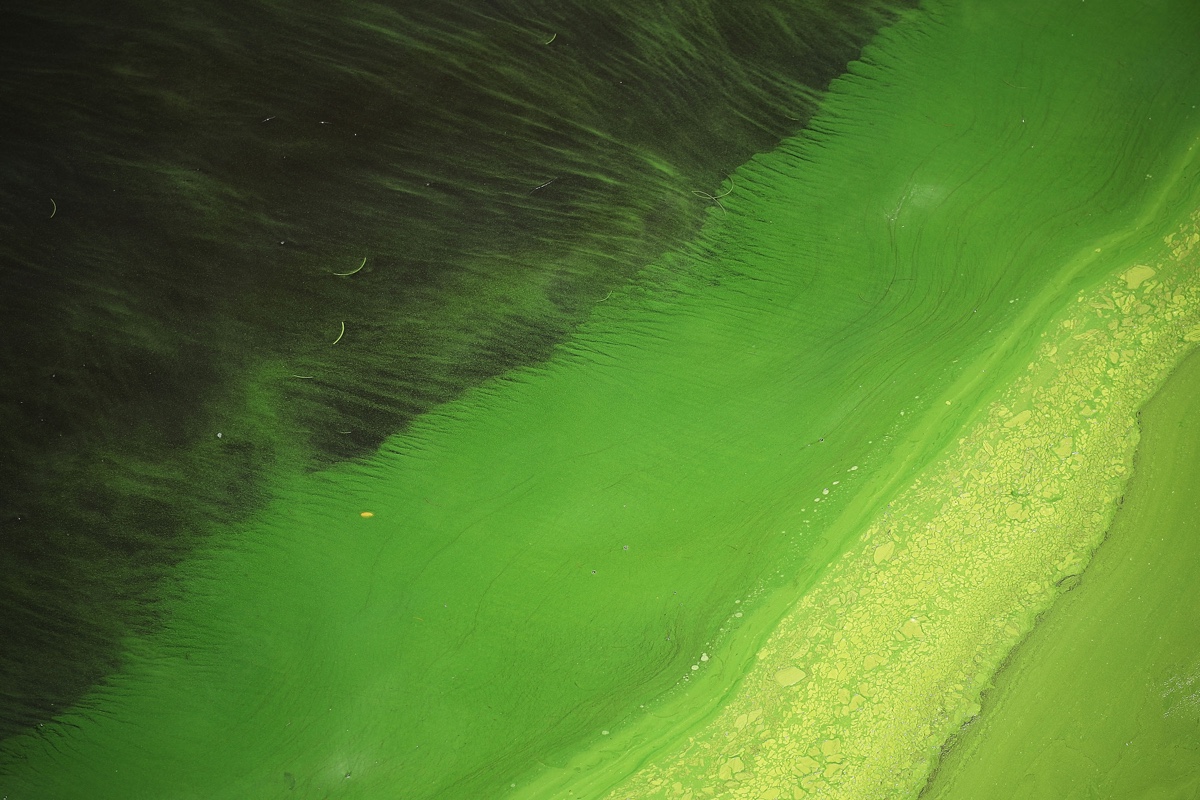Gooey Green Slime in Florida Waters Is Super Gross — and Super Toxic

A blanket of green goo — runaway growth of blue-green algae — is choking waters in Florida's St. Lucie River, an estuary near the state's southeastern coast.
But if for some reason you are tempted to touch the slimy mess, please don't. Recent testing by the Florida Department of Environmental Protection (DEP) of the widespread bloom shows that the algae, also called cyanobacteria, are emitting toxins called mycrocystin at levels of 110 parts per billion, which is 10 times the amount considered to be hazardous to human health, according to a water sample collected on Aug. 2, the local newspaper, TCPalm, recently reported.
In another St. Lucie River location, microcystin levels were even higher — 154 parts per billion — in a sample collected on July 5, according to The Weather Channel (TWC). [10 of the Most Polluted Places on Earth]
Microcystins can cause rashes, dizziness and nausea, and the toxins may irritate the throat and eyes, according to the Environmental Protection Agency (EPA). But they primarily target the liver and can cause severe damage — even liver failure — if ingested in high-enough quantities.
While blue-green algae are typically found in all of Florida's brackish and freshwater habitats, blooms generally emerge as a result of environmental pollution, such as urban runoff and nutrient pollution from agriculture, according to the Florida Fish and Wildlife Conservation Commission (FWC). Fed by pollution, algae populations thrive and grow, and the longer these conditions persist, the bigger and more intense the blooms (and the related microcystin toxins they sometimes emit) can become, the DEP reported.
Blooms that don't produce toxins can still harm water plants by blocking sunlight, and they can starve fish and other aquatic organisms by sucking up all the oxygen in the water, according to the FWS.
The current St. Lucie River bloom emerged in June, after contaminated water was released into the river from Lake Okeechobee; about 90 percent of the lake's surface was covered with a gloppy algae skin, TCPalm reported.
Sign up for the Live Science daily newsletter now
Get the world’s most fascinating discoveries delivered straight to your inbox.
Since June 1, about 25 billion gallons of algae-laden water were discharged from the lake. On June 20, Gov. Rick Scott issued an executive order to curtail the flow of harmful water and prevent the blooms from spreading. But the algae were already established in freshwater and brackish waterways, with 68 blooms reported by the end of July, according to the TC Palm.
In fact, a canal fed by the St. Lucie River was covered in an algae mat so dense and foul-smelling that a magazine office nearby temporarily closed on July 24, after employees complained of runny noses, itchy throats and respiratory trouble, the TCPalm reported.
Original article on Live Science.

Mindy Weisberger is an editor at Scholastic and a former Live Science channel editor and senior writer. She has reported on general science, covering climate change, paleontology, biology and space. Mindy studied film at Columbia University; prior to Live Science she produced, wrote and directed media for the American Museum of Natural History in New York City. Her videos about dinosaurs, astrophysics, biodiversity and evolution appear in museums and science centers worldwide, earning awards such as the CINE Golden Eagle and the Communicator Award of Excellence. Her writing has also appeared in Scientific American, The Washington Post and How It Works Magazine. Her book "Rise of the Zombie Bugs: The Surprising Science of Parasitic Mind Control" will be published in spring 2025 by Johns Hopkins University Press.









